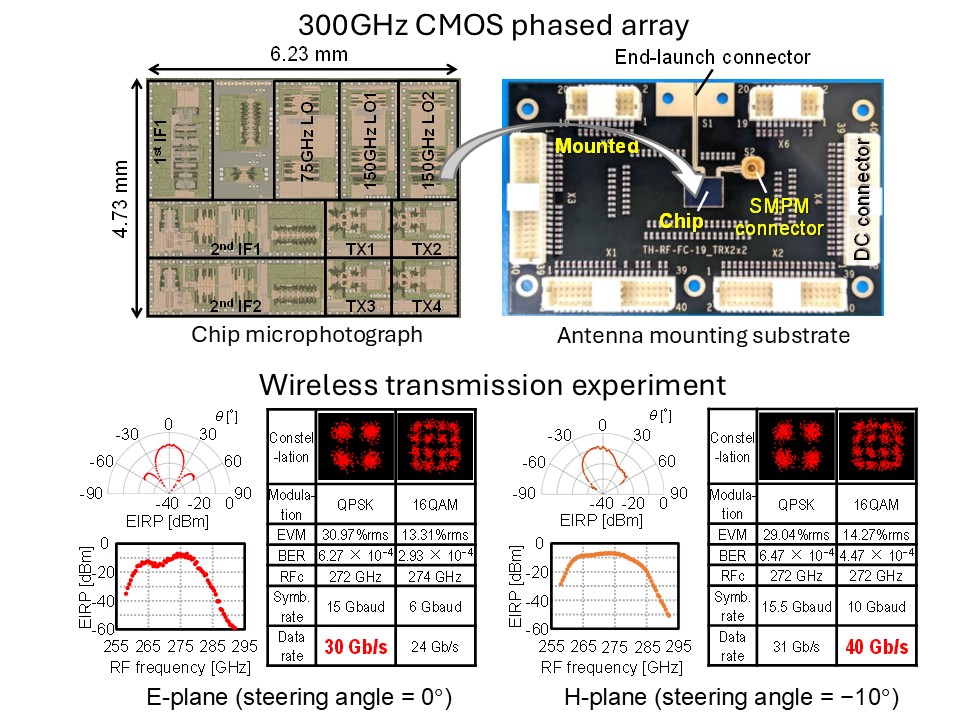Key points of this research results
- Realization of a 300GHz-band wireless transceiver using CMOS technology
- Practical signal transmission and reception achieved without amplifiers by employing power combining
- Novel interpolated feed architecture enabling coexistence of half-wavelength pitch antennas and full-wavelength pitch circuits
- Integration of 2D monolithic phased-array for dynamic beam steering
- Potential application to real-time wireless transmission of high-definition images for next-generation head-mounted displays
Outline
Wireless communication systems have steadily improved in data transmission rates, now reaching over 100 Gbps. One of the key enablers of this progress is the migration to higher carrier frequencies, which provides broader available bandwidth. The terahertz band, particularly the 300GHz band (252–296GHz), offers up to 44GHz of continuous spectrum, making it highly suitable for ultra-high-speed wireless transmission.
However, practical implementation of 300GHz systems is challenging due to degradation in the performance of conventional electronic devices at such high frequencies. To date, compound semiconductors and optical mixing approaches have been widely explored. In contrast, this research demonstrates the feasibility of using CMOS integrated circuits—despite their relatively limited high-frequency performance—for building a practical 300GHz-band transceiver, leveraging the benefits of scalability and cost-effective mass production. Due to the inherent limitations in CMOS technology, especially in realizing high-gain amplifiers at 300GHz, our approach avoids amplification entirely. Instead, we adopted a design based on parallel circuit configuration and power combining techniques to achieve sufficient output power and receiver sensitivity.
Furthermore, significant free-space path loss at 300GHz necessitates high-directionality antennas for long-distance transmission. Traditional large antennas offer fixed beam directions, which restrict their usability. To address this, we implemented beam steering through a phased-array approach. Given the short wavelength (1mm at 300GHz), a dense array with 500μm spacing is required. Collaborating with Nagoya Institute of Technology and Tokyo University of Science, we developed an interpolated feed structure that allows circuits to be laid out at 1mm pitch while maintaining antenna spacing at 500μm. This enabled us to demonstrate a monolithic 2D phased-array transceiver using standard CMOS processes.
Our future work will focus on enhancing beam control capabilities and integrating the system further to enable real-time, high-resolution wireless image transmission for head-mounted displays and similar applications.


 Home
Home



